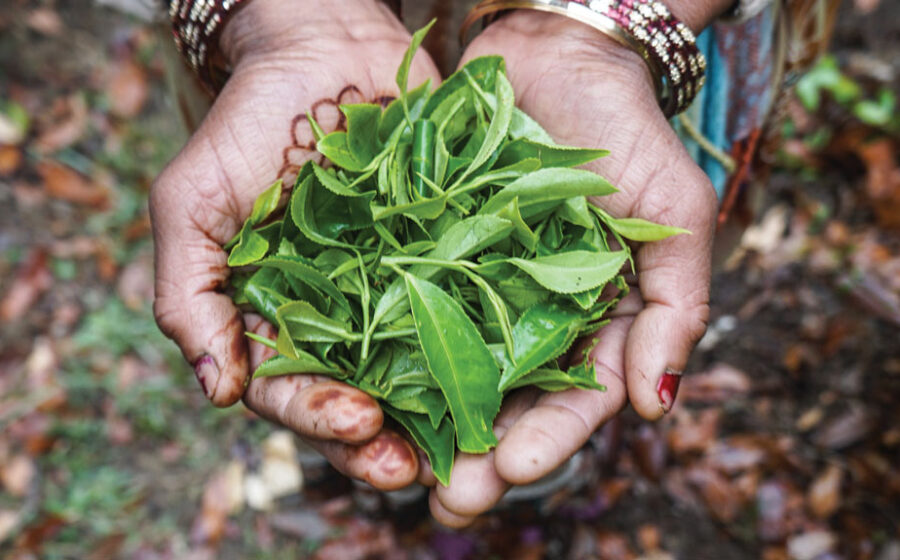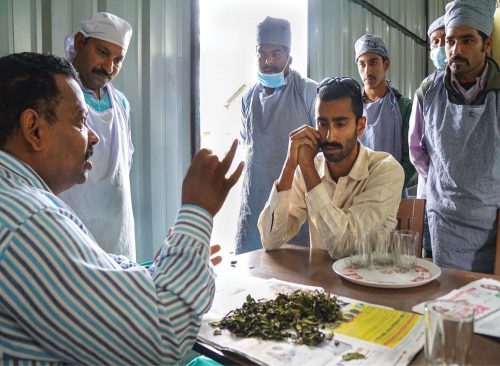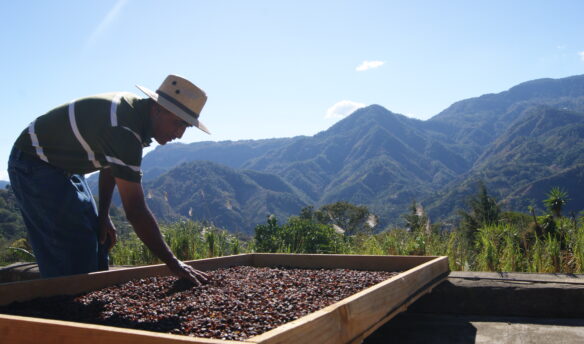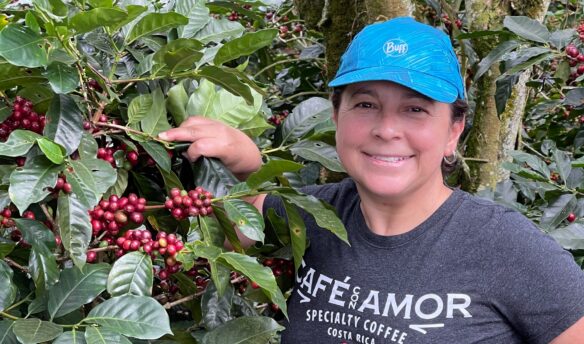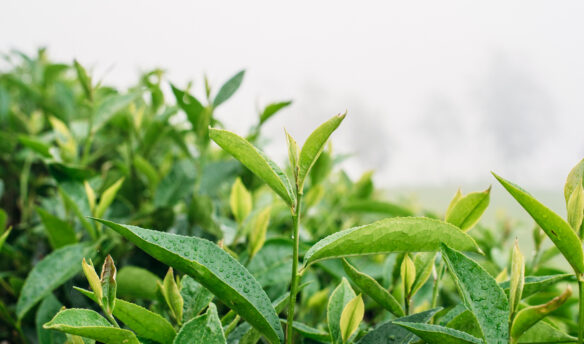Nestled in the foothills of the mighty Himalayas, 200 miles west of Nepal’s border, lies a little-known tea region called Kumaon.
One of the most remote regions in all of India, Kumaon (pronounced “koo-maw-in”) was originally settled in the 1400s by Indians fleeing religious persecution as invaders entered the subcontinent. This independent, self-reliant population settled the mountains. Far from the cities in the plains, they carved out terraces from the mountainsides to support subsistence lifestyles.
The first records of tea cultivation in Kumaon date back to the 1830s, a time when the British and East India Company were searching for places to grow tea on the Indian subcontinent to circumvent trade with China. Drawn to Kumaon’s acidic, well-drained soils, they brought in Chinese seeds to set up initial test plots on the mountainous landscape.
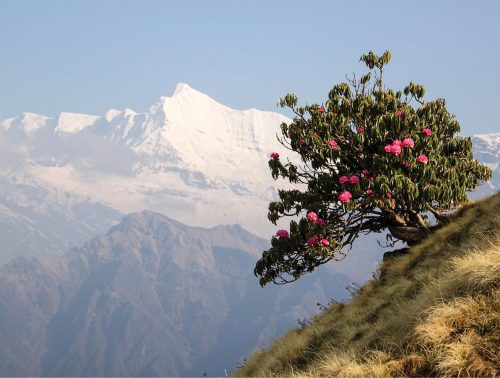
Camellia sinensis took well to Kumaon soils, and the plant thrived there—more than 15 years before Robert Fortune’s legendary saplings reached Indian shores.
While Kumaon tea was well received in Europe, the region was challenged by its distance from the ports. Kumaon was located hundreds of miles from the coastal British capital in Calcutta. Getting the tea out of the mountains and to the ports required roads, infrastructure, and a supply chain network that did not exist and was seen as a logistical nightmare. Strong lobbies of growers kept the focus and flow of resources toward developing tea plantations in Assam and Darjeeling.
By the 1920s, the experimental plots in Kumaon had been abandoned. Over the next few decades, the hardy tea bushes grew largely untended.
The road back

One of these families, the Birkbecks, remains today in Kumaon. For three generations, the Birkbecks have tirelessly worked to revive local tea cultivation, despite facing the same challenges that plagued the initial Kumaon growers, namely extreme isolation and an overall industry focus on the regions nearest to Calcutta. In the 1990s, the Birkbecks received encouragement in the form of a state government project designed to create rural livelihoods. After considering several other crops, the government settled on tea because of its hardy and resilient nature. (Rumor also has it that the decision was based, in part, on the fact that monkeys don’t steal tea.)
The program initially focused on cultivation, covering all costs to set up a farmer with tea plants. The government continued to lease the land under cultivation for the first seven years to guarantee farmers an income until the plants were fully productive.
But despite these incentives, Kumaon’s potential remained far from fully realized. Kumaon lacked critical mass to be taken seriously by the tea world at-large.
Building on a legacy
Today, Kumaon remains largely devoid of the large plantations that otherwise dominate the Indian tea landscape. More than 2,000 Kumaon households produce 120,000 pounds of tea annually.
Among them is Desmond Birkbeck, grandson of the British immigrants who moved to the region during the 1930s. Today, Desmond continues to run his family’s organic tea garden with many plants from the original Kumaon experiments, which are now more than 150 years old.
But the tea world has remained largely ignorant of the Birkbecks’ legacy—until now, thanks to the efforts of an ambitious young man named Raj Vable.
While pursuing a Fulbright Fellowship in the rural Kumaon hills, Vable noticed that tea was grown there on a small scale, but he also noted a large number of fields lying fallow. With young Indians leaving rural villages in pursuit of economic prospects in India’s urban centers, Vable wondered, “What if tea could be used as a means for establishing sustainable rural livelihoods?”
Vable moved to Oregon and set up Young Mountain Tea to introduce Kumaon teas to the world. Two years later, the team at Young Mountain Tea began organizing trips for tea drinkers to visit Kumaon homes, so they can experience the rebirth of Kumaon tea firsthand.
Drawing on the commitment of growers like Desmond Birkbeck, in conjunction with international trade partnerships, Kumaon tea farmers are creating the next generation of Indian teas.
Interested in more direct trade articles? Check out Jack of Direct Trade.



